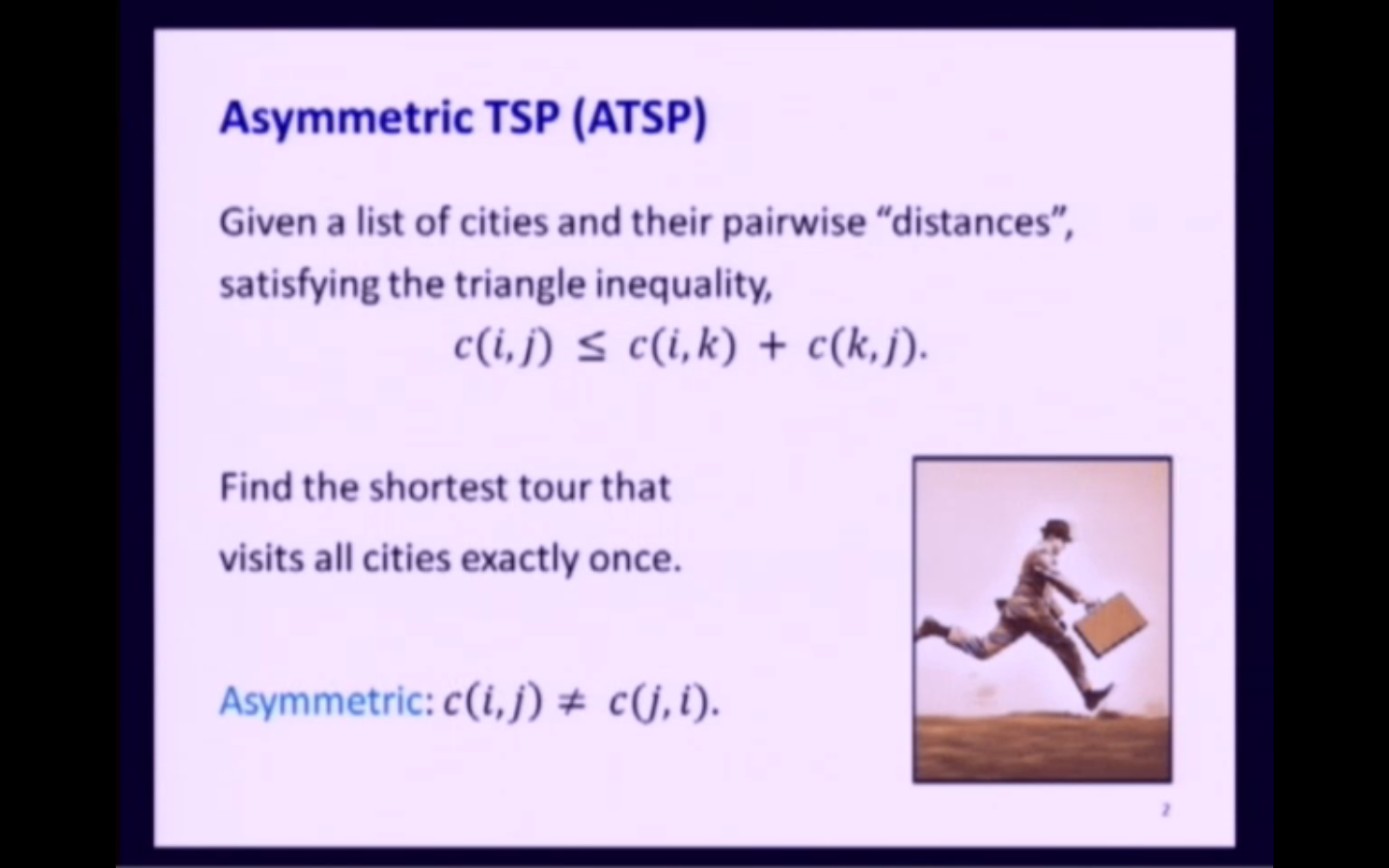Effective-Resistance-Reducing Flows, Spectrally Thin Trees, and Asymmetric TSP
Presenter
March 13, 2015
Keywords:
- travelling salesman problem
- NP-hard problems
- combinatorial optimization
- Marcus-Spielman-Srivastava theorem
- spectral graph theory
- k-connective graph
- approximation algorithms
MSC:
- 68Rxx
- 68R10
- 68W20
- 68W25
- 94C15
- 94Cxx
- 05Cxx
- 05C42
- 05C40
Abstract
Given a k-edge-connected graph G=(V,E), a spanning tree T is a-thin w.r.t. G, if for any S⊂V, |T(S,V−S)|≤a.|E(S,V−S)|. The thin tree conjecture asserts that for a sufficiently large k (independent of size of G) every k-edge-connected graph has a 1/2-thin tree. This conjecture can be seen as an L1 analogous of KS_r, for r=k, restricted to graphs. It is intimately related to designing approximation algorithms for Asymmetric Traveling Salesman Problem (ATSP).
In this work, we show that any k-connected graph has a polyloglog(n)/k-thin spanning tree. This implies that the integrality gap of the natural LP relaxation of ATSP is at most polyloglog(n). In other words, there is a polynomial time algorithm that approximates the value of the optimum tour within a factor of polyloglog(n). This is the first significant improvement over the classical O~(log n) approximation factor for ATSP. Our proof builds on the method of interlacing polynomials of Marcus, Spielman and Srivastava and employs several tools from spectral graph theory and high dimensional geometry.
Based on a joint work with Nima Anari.
